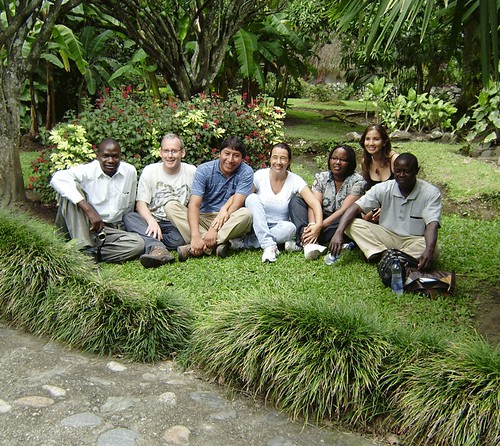
Image : http://www.flickr.com
Chemical, pharmaceutical, and biotechnology companies and inventors spend countless number of hours and a lot of money to come up with a drug for curing killer diseases like cancer or diabetes or a new catalyst that will speed up a chemical reaction towards making a wonder plastic. They protect their inventions by securing a patent.
For one reason or another, the patent owner may not be ready to make or sell the patented invention. The patent owner, for example, University or individual inventor, may be thinking of licensing the invention to another who can market the invention, and collect royalty payments rather than undertake efforts to secure financing necessary to bring their works to market themselves. However, much to the patent owner's surprise and anger, it may notice an infringer illegally making and selling the invention. Can the patent owner go and automatically get an order to halt the infringer's operations? The answer may be surprising. The courts are not always sympathetic to the patent owner.
In the recently decided fight between internet giant eBay and smaller company Mercexchange, who owned a patent for doing business on the web, Justice Clarence Thomas, speaking for the United States Supreme Court, ruled that the patent owner, besides showing that the patent has been violated, must prove that a number of things are lining up in its favor before it can stop the infringer from copying the patented invention. This is a dramatic departure from the earlier lower court ruling that, except in rare situations, a court should automatically issue an order to halt the infringer's operations if the patent owner proved that his valid patent is unlawfully copied.
To succeed in halting the operations of the infringer, the Supreme Court indicated that the patent owner must show that it has suffered beyond repair by the actions of the infringer; that there is no other remedy, such as money, than stopping the infringer; how its hardship outweighs the hardship of the infringer; and that public interest would not be harmed by halting the infringer. This is commonly called the "four-factor test".
In proving that the forces are working in the patent owner's favor, as required by the Supreme Court, one of the questions that would come up is how strong the patent is - i.e., can it survive an attack on its validity. In the words of Justice Anthony Kennedy, writing on the eBay case, "the potential vagueness and suspect validity of ... the patents may affect the calculus under the four-factor test."
Securing a strong patent is not trivial. It is important that patent is filed promptly. For example, if the patent is filed long after the invention was published in a magazine or displayed as a poster, its validity or vitality comes into question. Or the patent may have been filed promptly but the patent may have been drafted the patent such that the patent does not cover the invention adequately. To succeed in stopping the infringer, or to obtain a sizable royalty or settlement from the infringer, it is essential that the patent is strong and robust.
Xavier Pillai, Ph.D., a Partner in the law firm of Leydig, Voit & Mayer, Ltd. in Chicago, IL; Phone: (312)-616-5600 or email at xpillai@leydig.com. I help chemical, pharmaceutical, and biotechnology companies resist competition by securing strong patent protection.
No comments:
Post a Comment